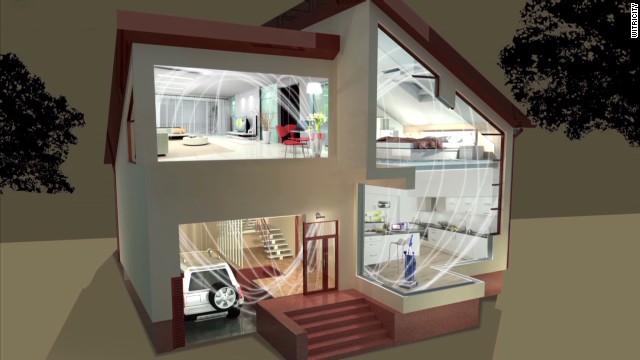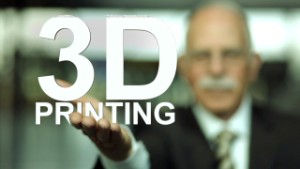
A world without wires
Looking back, it was a
crude experiment, she remembers: a tiny room filled with gigantic cooper
refrigerator coils -- the kind you'd see if you cracked open the back
of your freezer.
She walked in and out between the coils and the bulb -- and still the bulb glowed.
"I said: 'Let's work on this. This is the future.'"
What's the trick?
"We're going to transfer
power without any kind of wires," says Dr Hall, now Chief Technology
Officer at WiTricity -- a start-up developing wireless "resonance"
technology.
"But, we're not actually putting electricity in the air. What we're doing is putting a magnetic field in the air."
It works like this:
WiTricity build a "Source Resonator" -- a coil of electrical wire that
generates a magnetic field when power is attached.
 Can spider silk help you self-heal?
Can spider silk help you self-heal? Meet the genius behind 3-D printing
Meet the genius behind 3-D printing Is this the ultimate space suit for Mars?
Is this the ultimate space suit for Mars?
If another coil is brought close, an electrical charge can be generated in it. No wires required.
"When you bring a device
into that magnetic field, it induces a current in the device, and by
that you're able to transfer power," explains Dr Hall.
And like that, the bulb lights up.
Wireless homes
Don't worry about
getting zapped: Hall assures that the magnetic fields used to transfer
energy are "perfectly safe" -- in fact, they are the same kind of fields
used in Wi-Fi routers.
In the house of the future, wire-free energy transfer could be as easy as wireless internet.
If all goes to
WiTricity's plans, smartphones will charge in your pocket as you wander
around, televisions will flicker with no wires attached, and electric
cars will refuel while sitting on the driveway.
WiTricity have already
demonstrated their ability to power laptops, cell-phones, and TVs by
attaching resonator coils to batteries -- and an electric car refueller
is reportedly in the works.
Hall sees a bright future for the family without wires:
"We just don't think
about it anymore: I'm going to drive my car home and I'm never going to
have to go to the gas station and I'm never going to have to plug it in.
"I can't even imagine how things will change when we live like that."
World outside
Beyond these effort-saving applications, Hall sees more revolutionary steps.
When Hall first saw the
wireless bulb, she immediately thought of medical technology -- seeing
that devices transplanted beneath the skin could be charged
non-intrusively.
WiTricity is now working with a medical company to recharge a left-ventricular assist device -- "a heart-pump essentially."
The technology opens the
door to any number of mobile electronic devices which have so far been
held back by limited battery lives.
"The idea of eliminating
cables would allow us to re-design things in ways that we haven't yet
thought of, that's just going to make our devices and everything that we
interact with, that much more efficient, more practical and maybe even
give brand new functionality."]
What's next?
The challenge now is
increasing the distance that power can be transferred efficiently. This
distance -- Hall explains -- is linked to the size of the coil, and
WiTricity wants to perfect the same long-distance transfers to today's
small-scale devices.
For this reason, the team have high hopes for their new creation: AA-sized wirelessly rechargeable batteries.
For Hall, the applications are endless: "I always say kids will say: 'Why is it called wireless?'"
"The kids that are growing up in a couple of years will never have to plug anything in again to charge it."



No comments:
Post a Comment